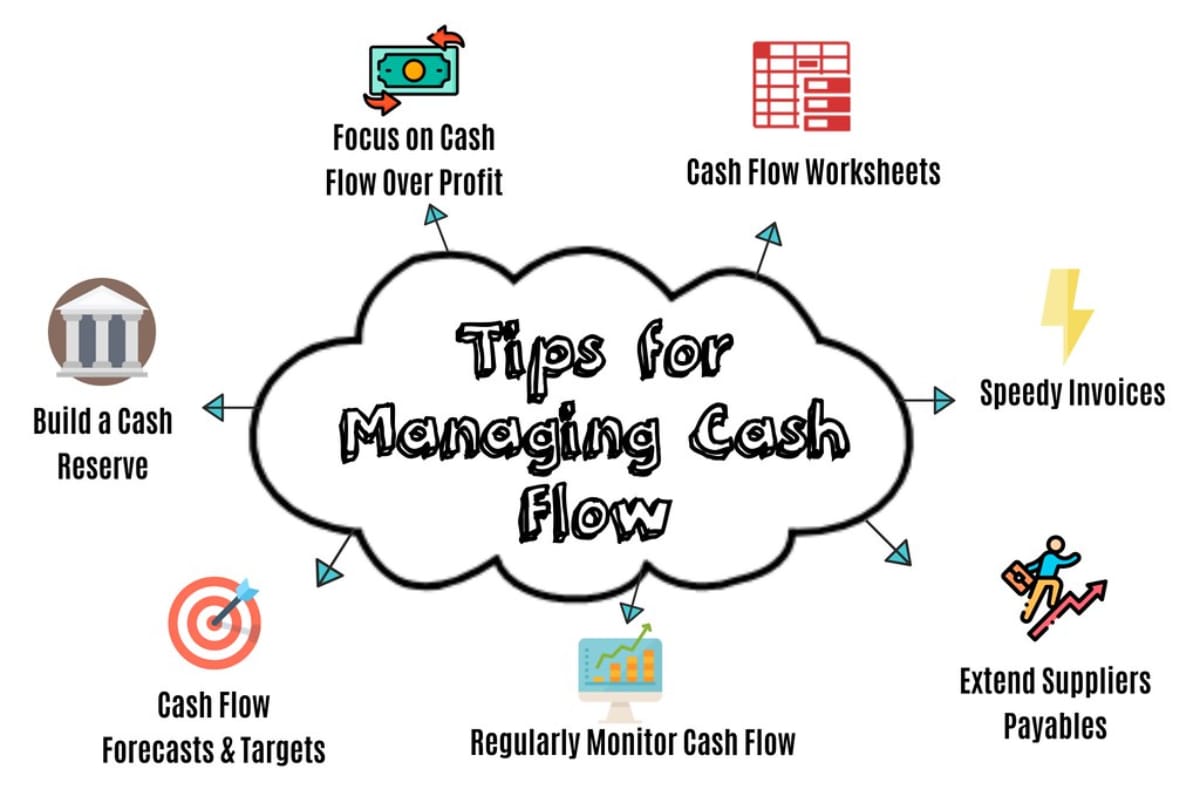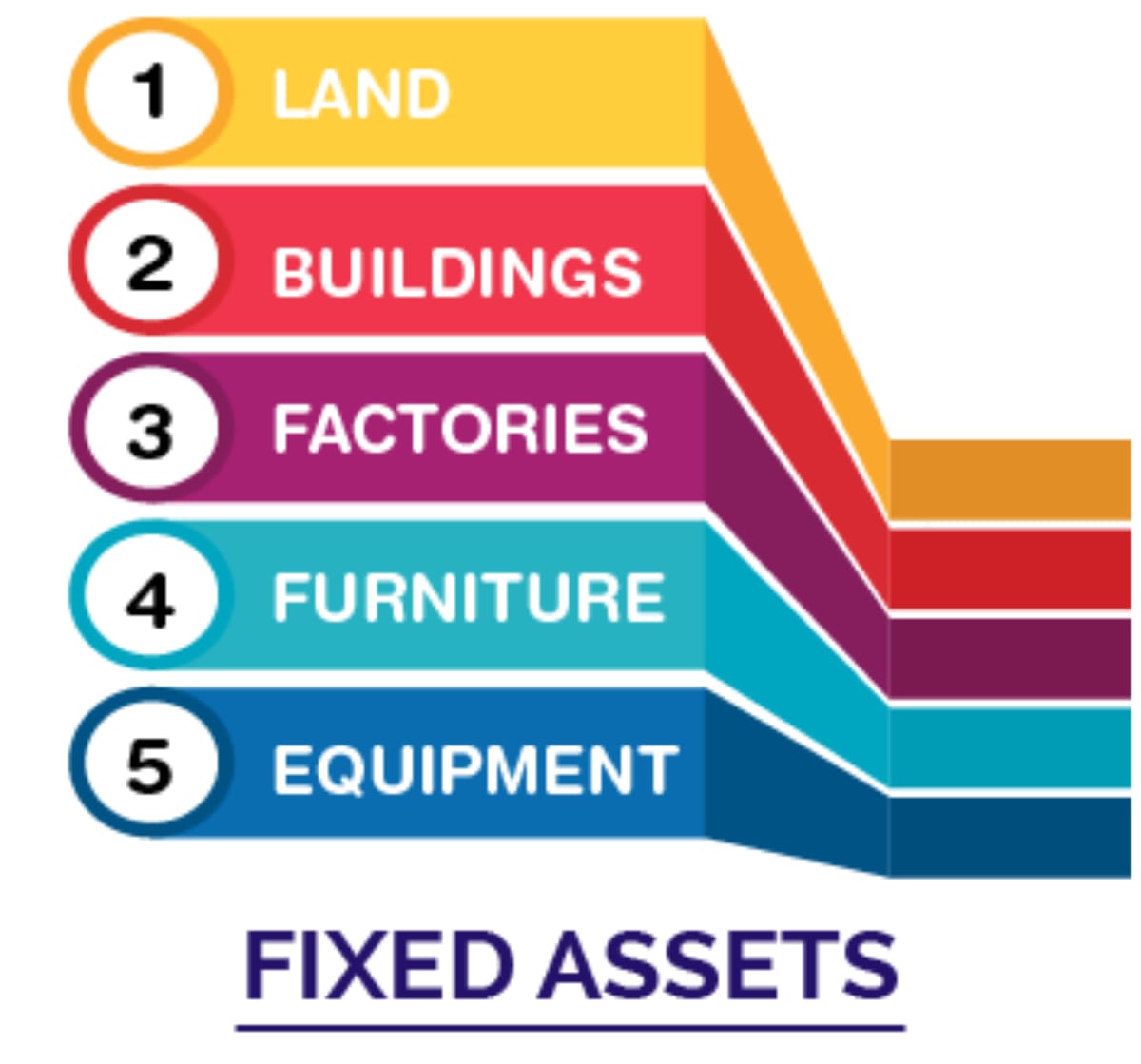5 Most Common (Money Traps) to Avoid in Business

Business ownership is an exhilarating journey, marked by the pursuit of innovation, growth, and profitability. However, navigating the financial complexities of running a business can be daunting, especially with several hidden money traps lying in wait to derail your financial stability. Understanding these common financial pitfalls and learning how to avoid them is crucial for sustaining and growing your business.
We will discuss the 5 most common money traps in business, offering insights and strategies to navigate these challenges effectively. Whether you're a seasoned business owner or just starting out, this guide will arm you with the knowledge to make informed financial decisions, ensuring your business remains on a path to success.
Money Trap #1: Insufficient Cash Flow Management

One of the most critical aspects of running a successful business is effective cash flow management. Cash flow, the lifeblood of any business, refers to the net amount of cash and cash-equivalents being transferred into and out of a business. When a business fails to manage its cash flow properly, it risks running into liquidity issues, making it difficult to cover operational costs, invest in new opportunities, or even stay afloat during tough economic times.
Why It's a Trap:
Many businesses, especially startups and small enterprises, focus heavily on profitability without giving due attention to cash flow. Profitability is an essential metric, but it's possible for a business to be profitable on paper while still struggling to meet its day-to-day financial obligations due to poor cash flow management.
Real-life Examples:
Several businesses have faced challenges due to inefficient cash flow management. For instance, a retail company might generate significant sales during the holiday season but fail to account for the slow months that follow. Without adequate cash reserves or a plan to manage the uneven cash inflow, the business could struggle to pay suppliers, employees, or even keep the lights on during off-peak times.

Strategies for Effective Cash Flow Management:
- Understand Your Cash Flow Cycle: Get a clear grasp of your business's cash flow cycle, including how long it takes to convert inventory into sales and sales into cash.
- Monitor Cash Flow Regularly: Use cash flow statements and forecasting tools to monitor your cash flow regularly. This will help you anticipate cash shortages and take proactive measures.
- Manage Receivables and Payables: Implement strategies to collect receivables faster and negotiate better terms with suppliers to manage payables more effectively. Offering early payment discounts and leveraging electronic payments can improve receivables.
- Maintain a Cash Reserve: Build a cash reserve to cushion against unexpected cash flow challenges. This reserve can be a lifesaver during slow business periods or when unexpected expenses arise.
- Cut Unnecessary Costs: Regularly review your expenses and cut costs that do not contribute to your business's growth. This could mean renegotiating contracts, outsourcing non-core activities, or finding more cost-effective ways to operate.
By prioritizing cash flow management and implementing these strategies, businesses can avoid the common trap of insufficient cash flow and ensure they have the financial agility to navigate both opportunities and challenges.
Money Trap #2: Overinvestment in Fixed Assets

Investing in fixed assets—long-term assets like property, plant, and equipment—is crucial for any business's growth and operational capacity. However, overinvestment in these assets can tie up valuable capital, reduce liquidity, and potentially hamper a business's ability to adapt to market changes or invest in other critical areas. Understanding the balance between necessary investments and overinvestment is key to maintaining financial health and flexibility.
Why It's a Trap:
Fixed assets require significant upfront investment and often have ongoing maintenance costs and depreciation. Businesses, especially those in their growth phase, may fall into the trap of overinvesting in fixed assets under the assumption that it will automatically lead to increased productivity and revenue. However, if the return on investment (ROI) on these assets does not outpace the costs or if market conditions change, businesses can find themselves with sunk costs that do not contribute proportionately to their growth.
Real-life Examples:
A classic example could involve a manufacturing company that purchases additional equipment to increase production capacity, anticipating higher demand. If the expected demand does not materialize, the company is left with underutilized assets, tying up funds that could have been used for other growth initiatives or to cushion against economic downturns.

Tips for Balanced Investment in Assets:
- Conduct Thorough Market Research: Before investing in fixed assets, conduct market research to validate the demand forecasts and ensure that the investment is justified.
- Focus on ROI: Evaluate the expected return on investment for any fixed asset purchase. Consider the asset's lifespan, maintenance costs, and how it fits into your overall business strategy.
- Consider Leasing or Renting: For some assets, leasing or renting might offer a more flexible and less capital-intensive option than outright purchases, especially for equipment that may become obsolete quickly.
- Implement Asset Management Practices: Regularly review your asset utilization to identify underperforming or underutilized assets that could be sold or repurposed.
- Plan for Flexibility: In rapidly changing industries, prioritize investments in assets that offer flexibility and can be adapted to various uses or easily liquidated if necessary.
By carefully evaluating each investment decision and considering alternatives to purchasing fixed assets outright, businesses can avoid the trap of overinvestment and maintain the financial flexibility needed to adapt to market changes and seize new opportunities.
Money Trap #3: Neglecting Marketing and Customer Acquisition

Marketing and customer acquisition are essential for business growth, brand development, and market share expansion. However, some businesses, particularly those focusing intensely on product development or operational efficiencies, may neglect these areas, viewing them as non-essential expenses. This oversight can lead to stagnation, as even the best products or services need effective marketing to reach potential customers.
Why It's a Trap:
The assumption that a product or service will 'sell itself' based on quality alone is a common pitfall. Without strategic marketing efforts, potential customers may never become aware of what your business has to offer. This can lead to missed opportunities for growth and a lack of competitive edge in the marketplace.

Real-life Examples:
Many startups and small businesses initially gain traction through word-of-mouth or organic growth but hit a plateau because they fail to invest in scaling their marketing efforts. This can result in a slow decline as competitors who aggressively market their products or services capture more of the market share.
Efficient Marketing Strategies:
- Understand Your Audience: Develop a deep understanding of your target market, including their preferences, behaviors, and the channels they frequent.
- Leverage Digital Marketing: Digital marketing offers cost-effective ways to reach and engage with a broad audience. Utilize social media, email marketing, SEO, and content marketing to build your brand and drive sales.
- Focus on ROI: Measure the return on investment of your marketing campaigns to identify the most effective strategies and channels. Adjust your efforts based on data-driven insights.
- Encourage Word-of-Mouth: Deliver exceptional customer service and create shareable experiences to encourage organic word-of-mouth promotion.
- Continuous Innovation: Regularly refresh your marketing strategies to keep pace with industry trends and consumer preferences.
Investing in marketing and customer acquisition is not merely an expense but a crucial investment in your business's growth and sustainability. By adopting a strategic approach to marketing, businesses can attract and retain customers, differentiate themselves from competitors, and achieve long-term success.
Money Trap #4: Failing to Plan for Taxes

Taxes are an inevitable aspect of running a business, yet many entrepreneurs and business owners fail to plan adequately for their tax obligations. This oversight can lead to unexpected liabilities, cash flow problems, and in severe cases, legal issues with tax authorities. Effective tax planning is crucial for minimizing liabilities and maximizing potential savings, ensuring that businesses remain compliant while optimizing their financial performance.
Why It's a Trap:
The complexity of tax laws can be daunting, leading some business owners to postpone dealing with their taxes until it's too late. This procrastination can result in underestimating tax liabilities, missing out on deductible expenses, or failing to take advantage of available tax credits. The consequences of poor tax planning can significantly impact a business's bottom line and its ability to invest in growth opportunities.

Real-life Examples:
Businesses that don't set aside funds for tax liabilities throughout the year may find themselves scrambling to cover large tax bills when they're due. This situation can force businesses to dip into emergency reserves, take out loans, or make other financial moves that could have been avoided with proper planning.
Guidance on How to Effectively Plan for Taxes:
- Stay Informed: Keep up with changes in tax laws that could affect your business. Consider consulting with a tax professional who can provide insights and strategies specific to your business's needs.
- Keep Accurate Records: Maintain meticulous records of all income, expenses, and potential deductions throughout the year to simplify the tax filing process and ensure you're not missing out on any deductions.
- Utilize Tax Planning Software or Professionals: Invest in reliable tax software or the services of a professional accountant. This can help you navigate the complexities of tax planning and compliance more effectively.
- Make Estimated Tax Payments: If applicable, make estimated tax payments throughout the year to avoid large lump-sum payments and potential penalties at year-end.
- Explore Tax Deductions and Credits: Regularly review your eligibility for tax deductions and credits that could reduce your taxable income. For example, investments in energy efficiency, employee benefits, and certain business expansions can offer tax advantages.
By incorporating tax planning into your overall financial strategy, you can avoid the trap of unexpected tax liabilities and position your business for sustainable growth and profitability.
Money Trap #5: Underestimating Operational Costs

Operational costs are the day-to-day expenses that businesses incur to keep running, such as rent, utilities, payroll, and supplies. Underestimating these costs can lead to budget overruns, financial strain, and in some cases, the failure of the business. Effective management of operational costs is essential for maintaining profitability and ensuring long-term success.
Why It's a Trap:
Many businesses, especially in their early stages, focus on the big picture and overlook the minutiae of daily expenses. This oversight can lead to a significant underestimation of the true cost of operations, resulting in cash flow problems and the inability to fund strategic investments or growth initiatives.
Real-life Examples:
A common scenario involves a startup projecting its operational costs based on ideal conditions without accounting for unexpected expenses, such as emergency repairs, increases in rent, or fluctuations in supply costs. This can quickly deplete reserves and force the business into making difficult financial decisions.

Strategies to Keep Operational Costs Under Control:
- Budget Wisely: Create a detailed budget that includes all potential operational costs, and review it regularly to adjust for any changes in your business or the market.
- Monitor Expenses Closely: Use financial management tools to track expenses in real time, allowing you to identify and address inefficiencies or overspending quickly.
- Optimize Operations: Look for ways to increase efficiency and reduce waste, such as automating repetitive tasks, negotiating better terms with suppliers, or adopting more cost-effective technologies.
- Outsource Non-Core Activities: Consider outsourcing non-essential functions, such as payroll processing or IT services, to companies that can provide these services more efficiently and cost-effectively.
- Encourage a Culture of Cost Awareness: Engage your team in identifying cost-saving opportunities and fostering a culture that values efficiency and prudent spending.
By taking a proactive approach to managing operational costs, businesses can avoid the trap of underestimation, ensuring they have the financial flexibility to adapt to challenges and seize new opportunities.
Final Thoughts
Avoiding these five common money traps in business requires diligence, planning, and a proactive approach to financial management. By understanding and addressing the risks associated with insufficient cash flow management, overinvestment in fixed assets, neglecting marketing and customer acquisition, failing to plan for taxes, and underestimating operational costs, entrepreneurs can safeguard their businesses against potential financial pitfalls. Implementing the strategies discussed in this article will not only help businesses navigate these traps but also position them for sustainable growth and success.
Now that you're equipped with the knowledge of the most common money traps in business and strategies to avoid them, it's time to take action. Review your business's financial management practices, consult with professionals where necessary, and implement the strategies that best suit your business's needs. Remember, proactive financial management is key to avoiding these traps and ensuring the long-term success of your business. Don't wait until it's too late; start planning and adjusting your financial strategies today to secure a prosperous future for your business.
Key Takeaways
| Money Trap | Key Takeaways |
|---|---|
| 1. Insufficient Cash Flow Management | - Monitor cash flow regularly. - Understand your cash flow cycle. - Manage receivables and payables effectively. - Maintain a cash reserve. |
| 2. Overinvestment in Fixed Assets | - Conduct thorough market research before investing. - Focus on ROI. - Consider leasing or renting. - Implement asset management practices. |
| 3. Neglecting Marketing and Customer Acquisition | - Understand your audience. - Leverage digital marketing. - Focus on ROI from marketing campaigns. - Encourage word-of-mouth promotion. |
| 4. Failing to Plan for Taxes | - Stay informed on tax laws. - Keep accurate records. - Utilize tax planning professionals or software. - Make estimated tax payments. - Explore deductions and credits. |
| 5. Underestimating Operational Costs | - Create a detailed operational budget. - Monitor expenses closely. - Optimize operations for efficiency. - Outsource non-core activities. - Foster a culture of cost awareness. |
Top Books on Financial Health
- "Financial Intelligence for Entrepreneurs: What You Really Need to Know About the Numbers" by Karen Berman and Joe Knight: This book equips entrepreneurs with the knowledge to understand financial statements and make better decisions based on financial data. It's designed to improve financial literacy by breaking down complex financial concepts into understandable and actionable information.
- "Profit First: Transform Your Business from a Cash-Eating Monster to a Money-Making Machine" by Mike Michalowicz: Michalowicz introduces a counterintuitive accounting methodology that prioritizes profit. The book is a guide to transforming the financial health of a business by using profits as a means to ensure sustainability and growth, rather than treating them as an afterthought.
- "The Lean Startup: How Today's Entrepreneurs Use Continuous Innovation to Create Radically Successful Businesses" by Eric Ries: Although broader in scope, focusing on innovation and startup methodology, this book is pivotal for understanding how to manage resources efficiently. It teaches entrepreneurs how to steer their businesses toward success with minimal waste and maximum impact, which includes avoiding overinvestment and optimizing operational costs.
- "Simple Numbers, Straight Talk, Big Profits!: 4 Keys to Unlock Your Business Potential" by Greg Crabtree: Crabtree provides straightforward advice on managing the financial health of a small business, focusing on profit margins, labor efficiency ratios, and other key metrics that can help business owners avoid common financial pitfalls.
- "The E-Myth Revisited: Why Most Small Businesses Don't Work and What to Do About It" by Michael E. Gerber: Gerber explores the reasons why many small businesses struggle and often fail, offering insights into how entrepreneurs can work on their business instead of in it, through systematizing operations and more effectively managing resources, including financial planning and management.





